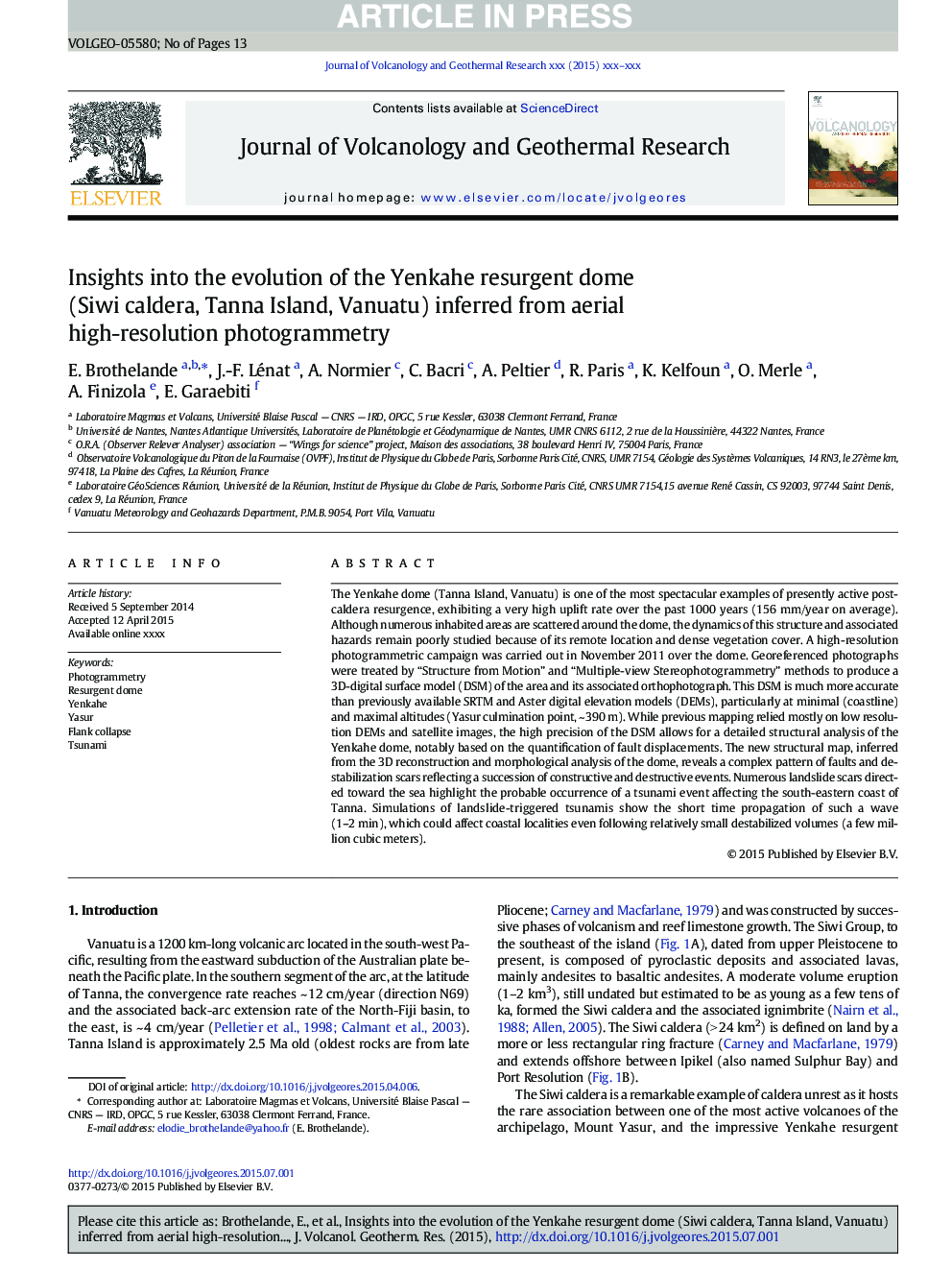| Article ID | Journal | Published Year | Pages | File Type |
|---|---|---|---|---|
| 6439576 | Journal of Volcanology and Geothermal Research | 2016 | 13 Pages |
Abstract
The Yenkahe dome (Tanna Island, Vanuatu) is one of the most spectacular examples of presently active post-caldera resurgence, exhibiting a very high uplift rate over the past 1000Â years (156Â mm/year on average). Although numerous inhabited areas are scattered around the dome, the dynamics of this structure and associated hazards remain poorly studied because of its remote location and dense vegetation cover. A high-resolution photogrammetric campaign was carried out in November 2011 over the dome. Georeferenced photographs were treated by “Structure from Motion” and “Multiple-view Stereophotogrammetry” methods to produce a 3D-digital surface model (DSM) of the area and its associated orthophotograph. This DSM is much more accurate than previously available SRTM and Aster digital elevation models (DEMs), particularly at minimal (coastline) and maximal altitudes (Yasur culmination point, ~Â 390Â m). While previous mapping relied mostly on low resolution DEMs and satellite images, the high precision of the DSM allows for a detailed structural analysis of the Yenkahe dome, notably based on the quantification of fault displacements. The new structural map, inferred from the 3D reconstruction and morphological analysis of the dome, reveals a complex pattern of faults and destabilization scars reflecting a succession of constructive and destructive events. Numerous landslide scars directed toward the sea highlight the probable occurrence of a tsunami event affecting the south-eastern coast of Tanna. Simulations of landslide-triggered tsunamis show the short time propagation of such a wave (1-2Â min), which could affect coastal localities even following relatively small destabilized volumes (a few million cubic meters).
Related Topics
Physical Sciences and Engineering
Earth and Planetary Sciences
Geochemistry and Petrology
Authors
E. Brothelande, J.-F. Lénat, A. Normier, C. Bacri, A. Peltier, R. Paris, K. Kelfoun, O. Merle, A. Finizola, E. Garaebiti,
